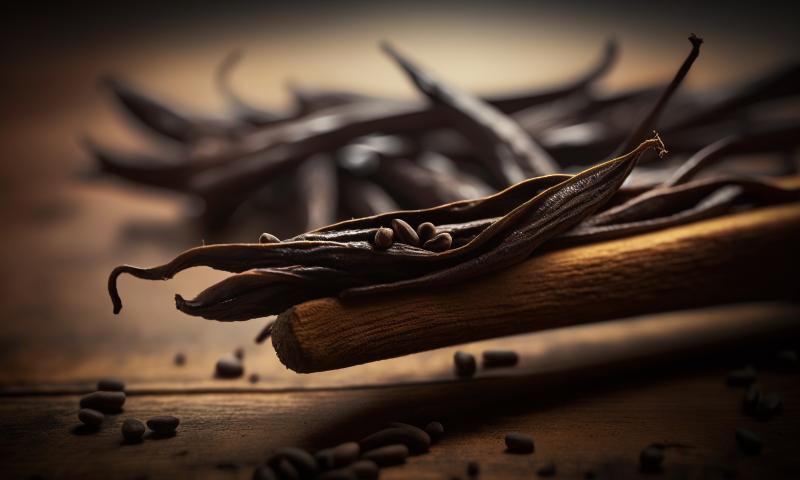 />
/>
Botanical Characteristics
Vanilla planifolia, belonging to the Orchidaceae family, is known for its distinctive long, green, and fleshy pods, commonly referred to as vanilla beans. These vines can grow up to 30 meters in length, thriving in tropical environments. The plant flowers are pale, yellow-green, and only open for a short period, requiring prompt pollination. The beans, initially green, turn black or brown when cured, emitting their characteristic fragrance.
Chemical Composition
The primary component contributing to vanilla's unique aroma and flavor is vanillin, alongside over 200 other compounds. These include eugenol, caproic acid, phenols, and esters. The exact composition can vary depending on the bean's origin, curing process, and age.
Habitat
Vanilla planifolia is native to Mexico and Central America but is now cultivated in various tropical regions worldwide, including Madagascar, Indonesia, and Tahiti. It prefers hot, moist climates and well-drained soil, often grown in shaded areas like under tree canopies.
Taste
Vanilla's taste is rich, sweet, and complex, with a creamy, floral aroma. It is a popular flavoring agent in desserts, beverages, and a variety of culinary applications. The taste can vary slightly depending on the bean's origin and processing method.
Historical Facts
Vanilla was first cultivated by the Totonac people of Mexico. The Aztecs later acquired vanilla when they conquered the Totonacs in the 15th century, using it to flavor their chocolate drink, xocolatl. Europeans were introduced to vanilla in the 16th century after Spanish conquest. Initially, it was a luxury item, but with modern cultivation methods, it has become more widely available.
General Health Benefits
Vanilla is not only appreciated for its flavor but also its potential health benefits. It contains small amounts of various minerals and vitamins, including calcium, magnesium, potassium, manganese, iron, and vitamin B2. The antioxidants present in vanilla, such as vanillic acid and vanillin, are believed to help protect cells from damage caused by free radicals. Moreover, vanilla has been traditionally used for its soothing properties and to aid in digestion. However, these benefits are generally obtained from natural vanilla and not synthetic vanillin.
Indications for Use
Vanilla is primarily used as a flavoring agent in foods and beverages. It's also found in fragrances and cosmetics. In culinary applications, both the vanilla bean and its extracted essence are used to impart flavor to various dishes and products. It is important to note that while vanilla has some health benefits, it is not intended to diagnose, treat, cure, or prevent any disease, in line with FDA guidelines.
Conclusion
Vanilla Planifolia remains one of the world's most beloved flavors, with a rich history and a wide array of uses. Its unique taste and aroma have secured its place in both the culinary world and in various cultural practices.
